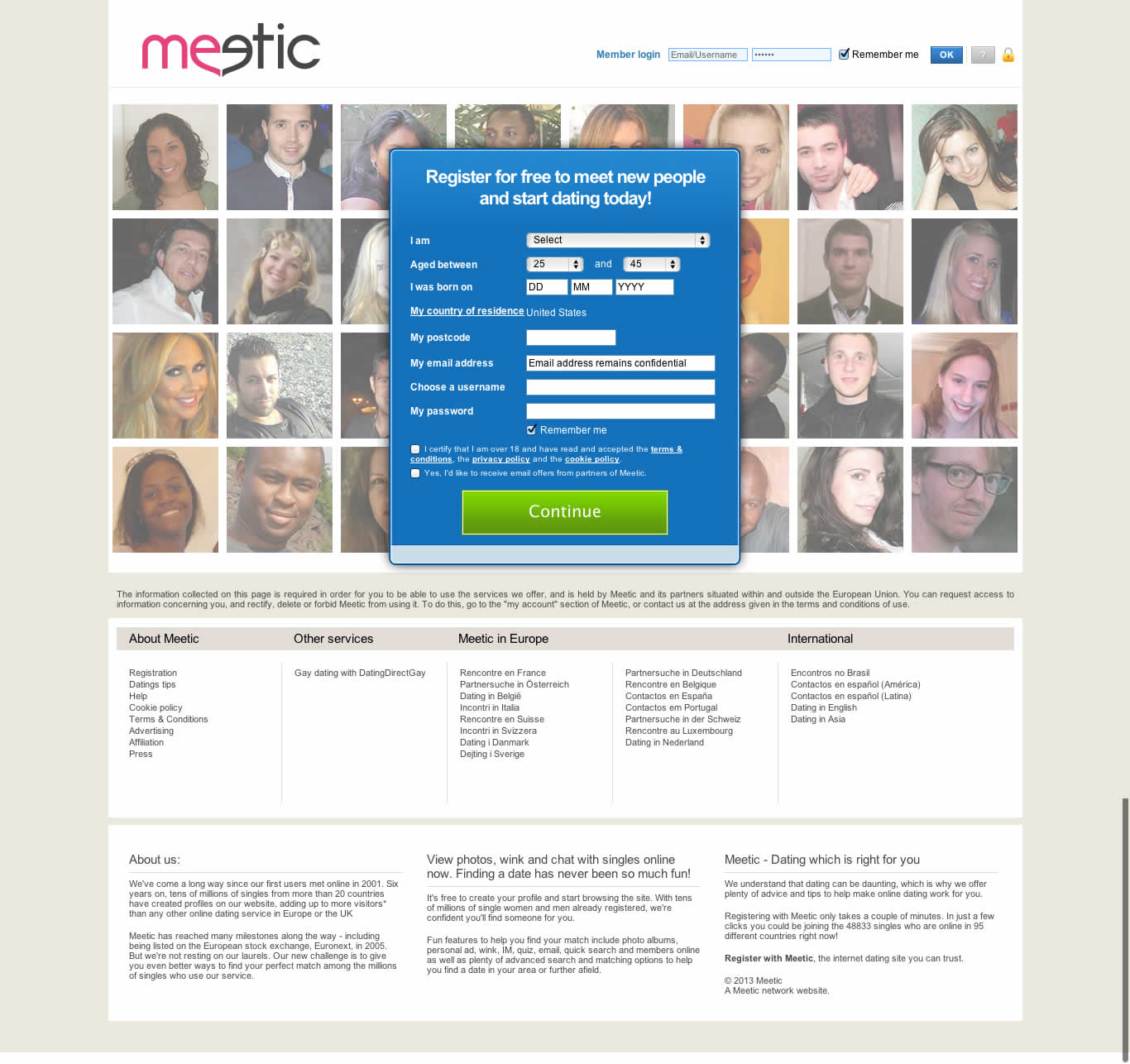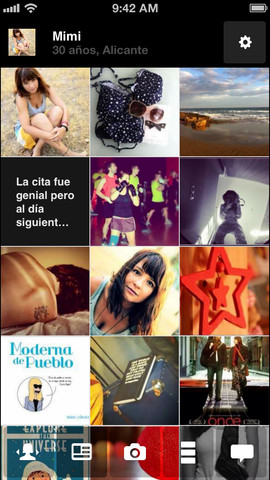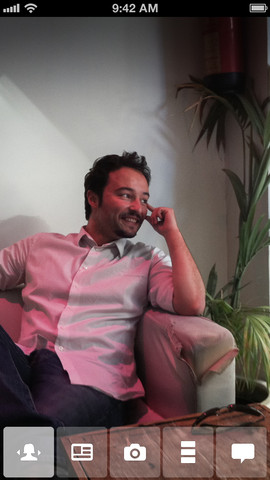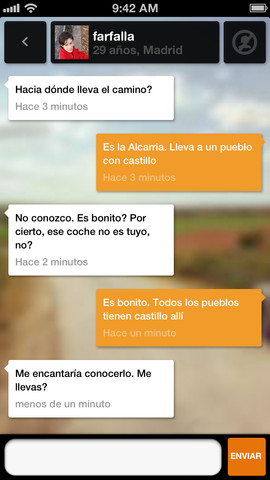
Strategy 2
Promising too much can be as cruel as caring too little
Everything in Southwest Airlines is designed to go fast. When the planes land, passengers are disembarked quickly, cleaners do their work at lightning speed, a new crew takes their places urgently and another group of passengers run inside the plane to take their seats as fast as possible. How does Southwest get its passengers to take part in such a wild race?
In Southwest, there are no reserved seats like in most airlines. Twenty-four hours before your plane takes off, you can check in online and reserve a place on the line to get onto the plane. If you’re the first one to do so, you will be the first on the line, the first one to board the plane, and the lucky one who will choose the seat you like best. If you’re the last on the line… Well, I think you get the idea. This way, Southwest gets its users to be on time lining up to board the plane. Passengers literally run to board the plane in the hopes finding a good seat. By minimizing the time on the ground, you need fewer planes, less crew on board, fewer expenses.
Southwest is possibly the company with the highest number of complaints from its passengers. That’s not surprising. But can we accuse them of having forgotten their users in their strategy? No. At Southwest, they know that their travelers’ critical needs are cheap flights and trips without delays—not better seats. But many times, it is not easy to sell low prices and efficiency.
Don Norman includes this story and an analysis of it in his controversial article “Why is 37 signals so arrogant?“. Here is another bit of the story:
“I once had a lively, entertaining dinner with Herbert Kelleher, Chairman and co-founder of Southwest Airlines. I asked him why they had ignored the requests of their customers. Herb looked me up and down sternly, sighed, took another sip of his drink, uttered a few obscenities, and patiently explained. His marketing people asked the wrong question. They should have asked, would you pay $100 more for inter-airline baggage transfers? $50 more for reserved seating? No, the customers wouldn’t have. They valued on-time, low-cost flights, and that is what Southwest delivers.”
Don Norman
A lot of things about Southwest’s strategy can and should be criticized, but coherence is not one of them. If your motivations are not low prices, don’t use it. It is not your company to fly with. Its value proposition is clear, as is the benefit for its clients. That does not mean that Southwest is a company for everyone, and I think that they, too, are clear about that.
Online Dating Strategies and Clients
It’s hard to find a strategy for your business, but even harder to stay true to it. If you doubt, change criteria or seem erratic, it is likely that your business will lose its initial value proposition and the proposition will be distorted. Your strategy will not be valid for all users, but certainly without it, you’ll have a one-size-fits-all business that doesn’t satisfy anyone.
I understand that models such as LEAN talk about flexibility and a predisposition to change, but here we are talking about the waterline over which a proposition or project is sustained. For example, within the world of online dating, there are many propositions—some of them tremendously successful—but that does not mean that they are valid for all dating service users. I will talk about three examples that I believe have three very distinct strategies.
Plenty Of Fish
Plenty Of Fish (POF) is possibly the largest dating website in the world. While the rest of the dating websites charge their users, POF bases its entire strategy on the opposite… Using it is free. It has over eleven million users and in 2008 it made a profit of 10 million dollars. It has very few workers on the payroll, and its revenues come from its advertisers, not its users. It is a success story.
POF users will not find an impressive technological platform. The (inexistent) visual design found is frankly forgettable, but in contrast, it has a huge community of users. The rest is accessory. Not charging users makes sense. Maximizing the community as much as possible is the strategy. Every day, POF has 20,000 new registrations.
Meetic
Meetic was founded in 2001 by Marc Simoncini (FR) 2001 and Spain became the first subsidiary outside of France in 2003. Today, Meetic operates in 16 European countries and more than 20,000 users register each week in meetic.es. In Spain alone, there are more than 9 million users. Meetic was one of the first companies to bring online dating to Europe. Its biggest assets are its enormous community, its large number of parameters (80+) which allow users to select the ideal date, and its many, many tools: Daily 6, Interest Modules, Contact Filters, MeeticMessenger, MeeticTest, Arrows, Personalized Searches…
Meetic is a pay-to-use site. Its strategy is based in its enormous database and its tools which allow users to search for and find their perfect partner. With so many tools and search parameters, Meetic’s technological potential is light years beyond sites such as Plenty of Fish.

The user definition strategy, in the words of his communication department:
Question: Is there a definition of the type of user your platform is aimed at?
Answer: The user base of Meetic is one of of the most balanced in the market. Our users are mainly university-educated with an average age of 32, and coming from mid-to-upper socio-cultural levels. The common characteristic of our large user base is their desire to meet new people, their optimism and their proactivity in making contact with other users.
Q: Has a specific strategy to reach and engage this type of user been sought?
A: Meetic was launched in Spain and Portugal by José Ruana, in 2003, and from the start he implemented a clear strategy and business model. During the launching of the business in Spain, a key strategy was to offer Meetic services free to women. Today, all users are subject to the same pricing conditions, however this strategy was key to capturing a healthy female usership in the first years of Meetic in Spain.
Q: Did you take into account the rest of the competitors when deciding the type of user to aim at?
A: Meetic was created due to the lack of online dating companies in Europe. In ten years, it has become the undisputed leader in this sector in Europe, currently in 16 European countries and operating in 13 different languages. Like any company, Meeting has always taken into account competition from international markets, however, locally in Spain there were no references in the market to influence our user strategy. Instead, we focused on establishing a platform to expand the
possibilities for users to meet new people who they otherwise would not.
Caoba
Caoba is a mobile app that is only available, for now, for iPhones. Its approach is totally different from the two previous ones. At a talk in Madrid about mobile app design, Javier Cañada, head of Vostok Studio, explained what its starting point is:
- It´s hard for people to describe themselves at words
- The fundamental unit of content on these types of websites is the image
- A mobile app offers more privacy:
- Only I can see what’s happening on my screen
- I can always put my mobile away in my pocket
- No one will know what I’m doing.
Focusing on an App makes sense to Caoba. It can be used randomly and privately and right from the user’s pocket rather than on a more public space such as a work computer. Use is emotional, and image is everything—no content; if there is no spark at first glance, it really doesn’t matter about similar tastes. There are very few options, save for the most necessary ones. There is nothing to obscure who you are, your image, your face. This strategy makes this an App for strong personalities and this is reflected in the type of users that use Caoba.

The user definition strategy, in the words of Javier Cañada himself:
Question: Is there a definition of the type of user your platform is aimed at?
Answer: Yes. Caoba is used by interesting people, who have depth. By just trying the app for a few minutes, you can see this. It’s a profile of people who know how to describe themselves well with photographs, because almost all of them are Instagram or Flickr users. These are polite people with a certain sense of class and poise, who know how to have fun, with humor and without vulgarity. We are very strict in this regard. We help whoever is describing themselves poorly, and we kick out anyone who shows disrespect to the rest of the users.
Q: Has a specific strategy to reach and engage this type of user been sought?
A: Initially, it started from our circle of friends, but now word of mouth is helping a lot (interesting people call more interesting people). What’s also helping is the fact that we are generating a lot of content and discussion with this orientation on Twitter and Facebook. The content per se is interesting to a certain type of person, and some decide to try the app.
Q: Did you take into account the rest of the competitors when deciding the type of user to aim at?
A: No. Not in the sense of seeking a niche, but yes in observing what they do well and what they do badly. Actually, we don’t consider dating websites to be our competition. It’s highly unlikely that the people who use Caoba use POF or Meetic.
Before going forward with your product, stop and answer these questions: What is your strategy? How true are you to it? How many users have you renounced because you are true to it? How many users have you acquired because you are true to it? Perhaps the answers will serve so that more users want to take off with you.
P.S. If you want to know what 37 signals’ reply to Don Norman is: 37signals a Don Norman: “Why we disagree with Don Norman“.
Follow @NoamMorrissey Tweet



